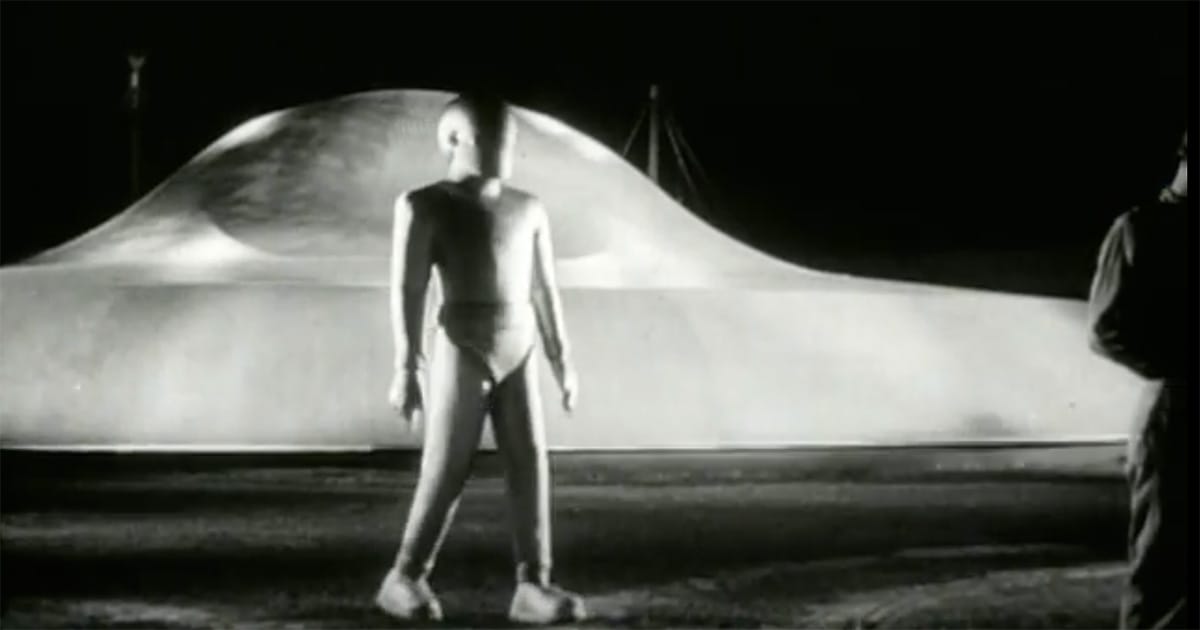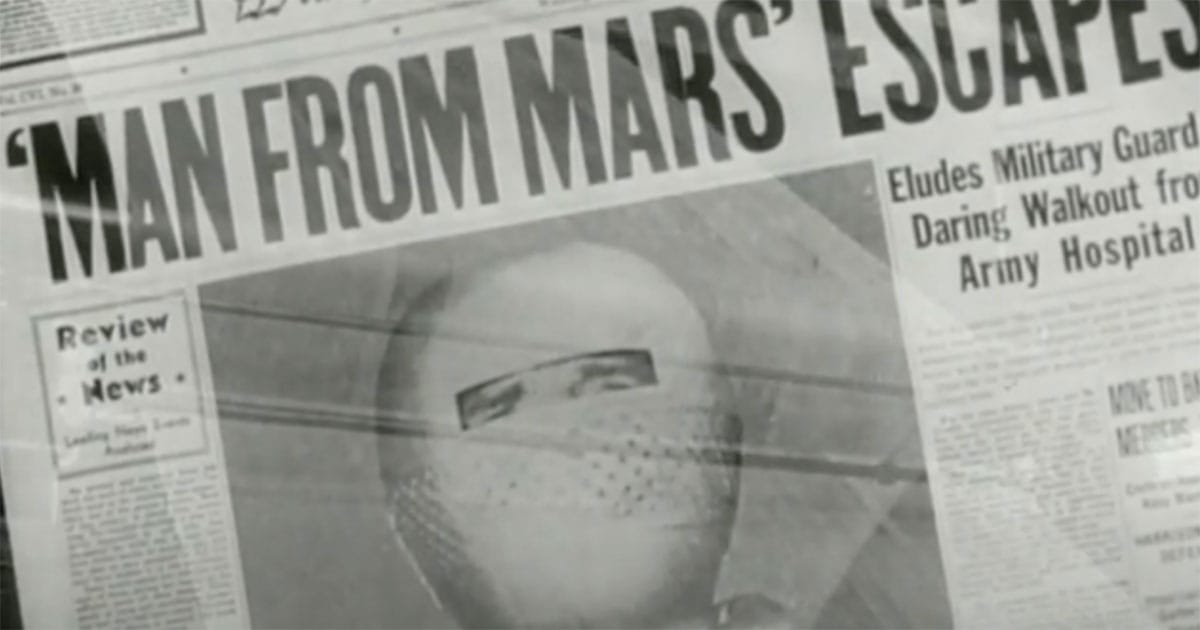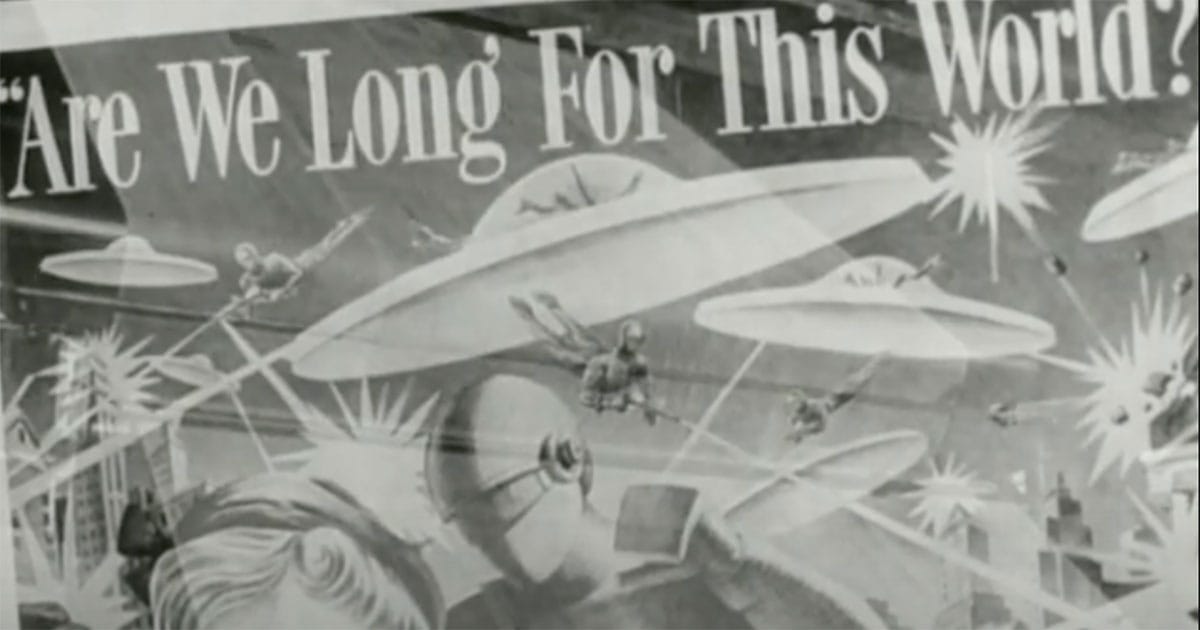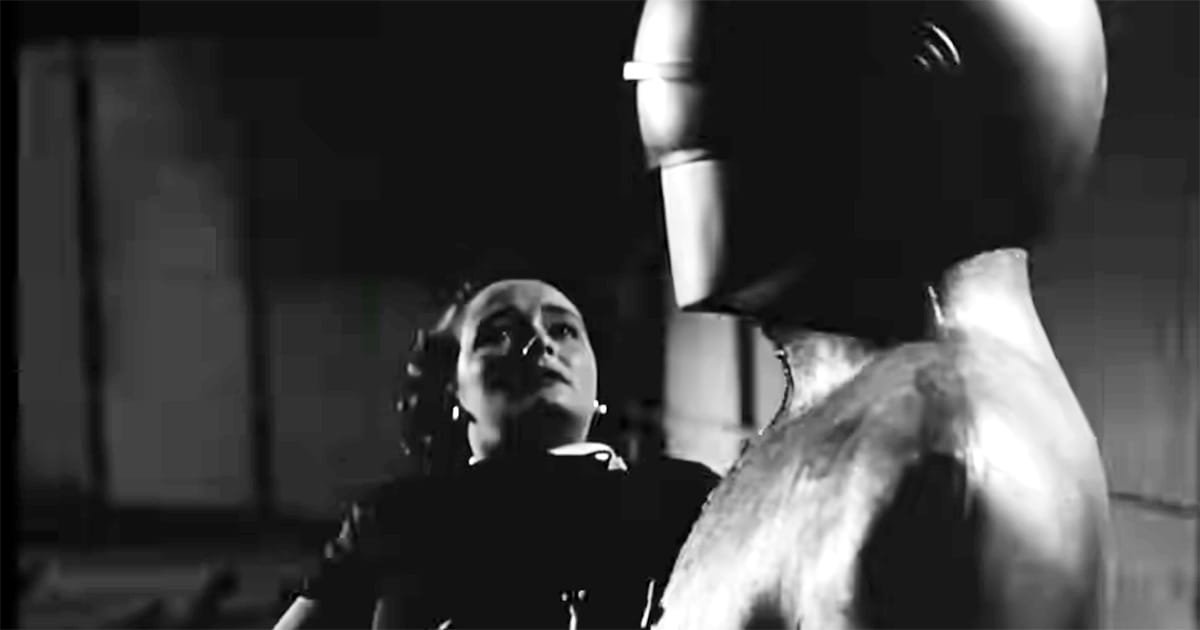How One Alien Warned a World on Edge
Discover the timeless classic "The Day the Earth Stood Still" (1951), directed by Robert Wise. Explore its profound themes and enjoy a rating of 7.7/10.

"The Day the Earth Stood Still" (1951): A Calculated Plea for Peace
Released in 1951, "The Day the Earth Stood Still" is a pivotal work in science fiction cinema, directed by Robert Wise and adapted from Harry Bates' story "Farewell to the Master."
The screenplay by Edmund H. North distills the tensions of its era into a stark question about mankind's maturity in the atomic age. Michael Rennie's Klaatu, calm and composed, arrives as an emissary of a galactic order. He is accompanied by Gort, a powerful robot whose silent presence conveys both the menace and promise of superior technology.
Set amid Cold War fear and nuclear dread, the narrative examines how humanity reacts to forces it cannot control or comprehend. Wise grounds the extraordinary in the familiar, using Washington, D.C., as a stage for philosophical inquiry. The film contrasts the military's reactionary posture with the more reflective responses of ordinary citizens, especially Helen Benson, portrayed with quiet strength by Patricia Neal. Bernard Herrmann's eerie theremin score underscores the tension, lending the story a sense of cosmic unease.
Rather than deliver spectacle, the film provides a warning. Its enduring relevance lies in its insistence that survival depends not on strength but on wisdom. This review explores how Wise's film endures—not merely as entertainment, but as a rare moment when science fiction held up a mirror to the world and asked it to think.
| Attribute | Detail |
|---|---|
| Title | The Day the Earth Stood Still |
| Director | Robert Wise |
| Writer | Edmund H. North, Harry Bates |
| Actors or Actresses | Michael Rennie, Patricia Neal, Hugh Marlowe |
| Rated | G |
| Runtime | 92 min |
| Box Office | N/A |
| U.S. Release Date | 20 Sep 1951 |
| Quality Score | 7.7/10 |
Synopsis
Klaatu arrives on Earth in a flying saucer that lands in Washington, D.C., drawing a crowd of curious onlookers. What begins with hopeful curiosity quickly turns violent when soldiers shoot him in a display of fear and misunderstanding. Klaatu seeks a meeting with world leaders to deliver a message of warning, but political divisions and suspicion block his efforts. His presence is met not with reason but with armed resistance.

To better understand human nature, Klaatu adopts the alias Mr. Carpenter and blends into society. He forms a quiet bond with Helen Benson and her son, Bobby, who offer him a glimpse of ordinary human life. Through their kindness, Klaatu perceives that humanity's flaws are matched by its capacity for empathy. This discovery complicates his mission, adding a moral dimension to his stark warning.
As tension builds, Klaatu is arrested and held by the military. He is forced to reveal his identity and explain his mission to prevent Earth from becoming a danger to other civilizations. With Gort standing as a symbol of interstellar judgment, Klaatu offers a final ultimatum. Humanity must choose peace, or face consequences from a larger galactic authority.
The film ends not with triumph but with reflection. Klaatu departs, leaving mankind to decide its own future. "The Day the Earth Stood Still" blends human drama with cosmic stakes, asking whether wisdom can prevail over fear. The story remains a cautionary tale, as relevant today as when it first aired.
Themes of Responsibility, Fear, and the Human Condition
"The Day the Earth Stood Still" captivates not only through its storyline but also by confronting timeless questions about civilization, conflict, and moral choice. The film explores the tension between humanity's destructive instincts and its capacity for grace and understanding. Klaatu arrives not as a conqueror but as a warning—an emissary representing a power greater than Earth's. His mission is not vengeance but intervention, a chance to steer humanity toward survival through reason.

The story unfolds in the shadow of Cold War anxieties, where the specter of nuclear conflict loomed large over global affairs. Klaatu's presence reveals how swiftly fear can distort logic, turning potential dialogue into confrontation. The film asks what it means to be civilized if our first response to the unknown is hostility. That question lingers behind every interaction Klaatu has, whether with generals, bureaucrats, or common citizens.
Leo Tover's cinematography supports these themes with stark contrasts, subdued lighting, and careful framing. Darkness encroaches during moments of conflict, enveloping the characters in uncertainty. These visual choices create an atmosphere where fear feels both personal and collective. The use of shadows and silence reinforces the sense that humanity stands at a precipice.
Sound also plays a vital role in the thematic structure of the film. Bernard Herrmann's theremin score produces an eerie, otherworldly tone that never lets the viewer forget Klaatu's alien origins. It is a sound that unsettles rather than comforts, heightening the emotional tension without a single spoken word. When Gort moves, the score crescendos, transforming silence into an auditory warning of power and judgment.
Klaatu's role as observer and participant allows the audience to view humanity through his eyes. His decision to walk among people in the guise of Mr. Carpenter is more than a plot device—it is a philosophical exercise. In observing human interactions, he discovers that compassion exists even amid fear. His friendship with Helen and her son Bobby becomes the emotional core of the story.

Through those relationships, the film reminds viewers that the most meaningful connections often occur outside systems of power. Helen responds not with suspicion but with curiosity, showing that trust is still possible. Bobby, in his innocence, represents the uncorrupted hope of future generations. These characters suggest that while institutions may falter, individuals can choose a better path.
The film also takes aim at institutional authority, especially the military, which is portrayed as reactive and mistrustful. These leaders believe control and containment are the solutions, failing to consider the consequences of such short-sighted thinking. Klaatu's struggle to be heard reflects the danger of allowing fear to dictate policy. His message is clear. Without wisdom, power becomes a liability rather than a safeguard.
As the film nears its conclusion, the stakes become global. Klaatu's ultimatum is not a threat but a final opportunity for reflection. The question he poses is not whether Earth can fight, but whether it can grow. That shift—from confrontation to responsibility—is what gives the film its enduring impact.
In the end, "The Day the Earth Stood Still" is more than a tale of aliens and robots. It is a meditation on choice, a warning against reflexive aggression, and a call to examine the values that guide our actions. Its themes remain relevant because the challenges it presents are not bound by time. The film leaves us with a decision, not just about peace, but about who we want to become.
Who Will Enjoy The Day the Earth Stood Still
"The Day the Earth Stood Still" appeals to a broad audience, reaching well beyond the typical science fiction fan. While genre enthusiasts will appreciate its historical context and speculative premise, general viewers will find value in its sober examination of human nature. It is a film that rewards thoughtful engagement, inviting reflection on global issues, fear, and the responsibility of power. Viewers who enjoy stories that blend realism with philosophical inquiry will find much to consider.

This film is especially well-suited for group viewing among friends or colleagues interested in themes of diplomacy, ethics, and conflict resolution. It encourages discussions that move from the fictional to the real, prompting viewers to think critically about their world. Its restraint and clarity make it accessible, while its message about restraint in the face of danger remains timeless. A study group or book club could easily use it as a springboard for meaningful dialogue.
Educators can also find practical use for this film in classrooms, especially in lessons dealing with Cold War history or ethical decision-making. The narrative provides a vivid example of how cultural fears manifest in storytelling. Klaatu's interactions with humans serve as a mirror for real-world tensions between nations and ideologies. It is a story that offers both entertainment and a framework for historical discussion.
Classic film fans who appreciate black-and-white cinema will enjoy its careful composition and measured pacing. The performances, particularly by Michael Rennie and Patricia Neal, add emotional weight without melodrama. Viewers drawn to moral allegory or subtle storytelling will find the film both satisfying and thought-provoking. Its minimalism in special effects is balanced by its richness in theme.
Ultimately, the film's appeal lies in its clarity and relevance. It offers a layered viewing experience that rewards both casual audiences and those seeking deeper insights. "The Day the Earth Stood Still" stands as a cinematic invitation to think more critically about the paths we choose in uncertain times. That message, restrained yet resolute, continues to resonate across generations.

